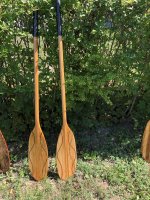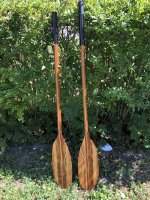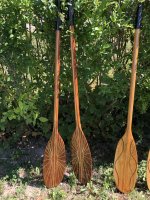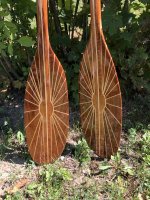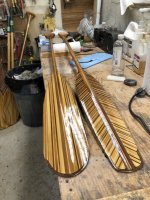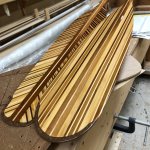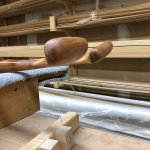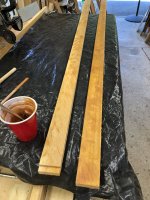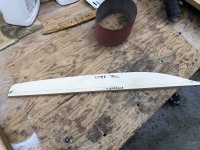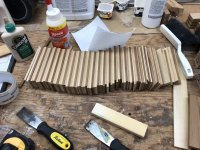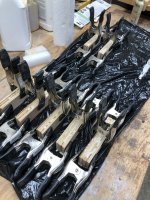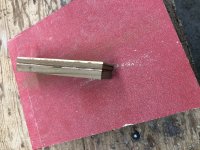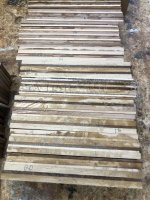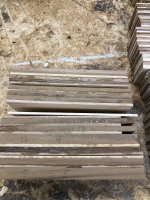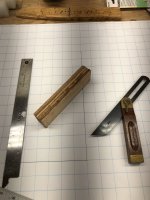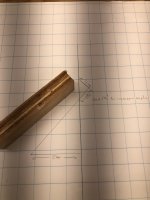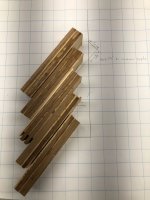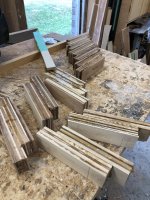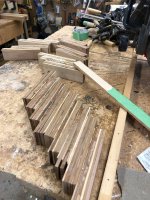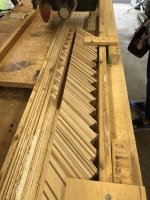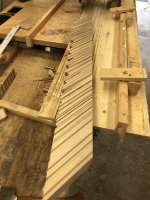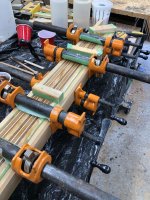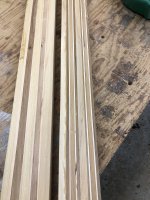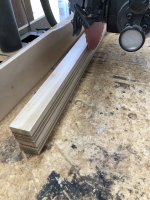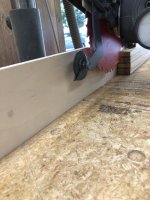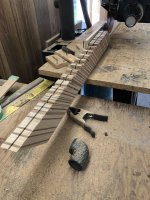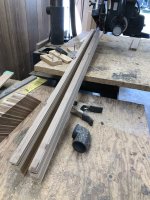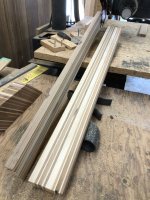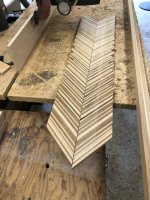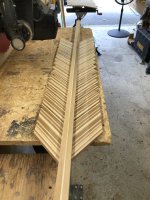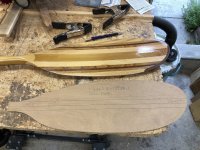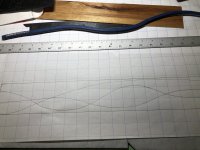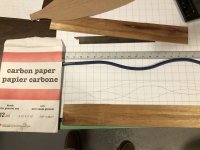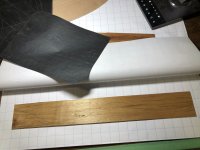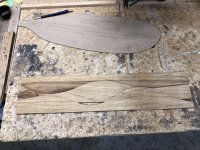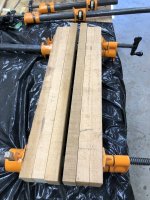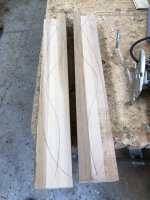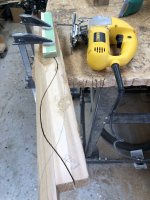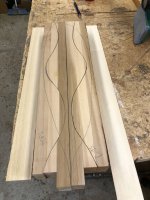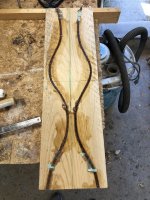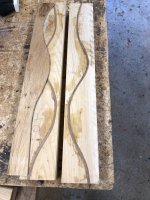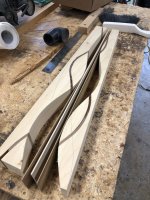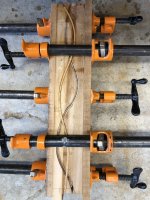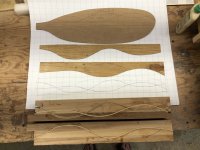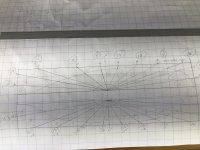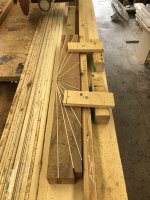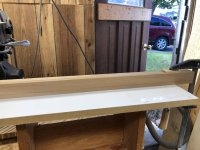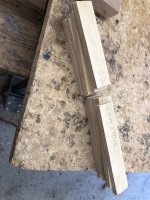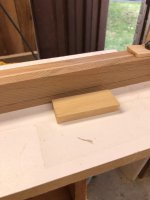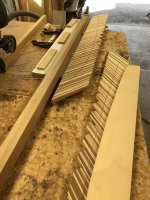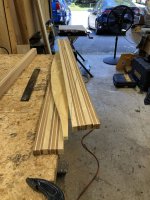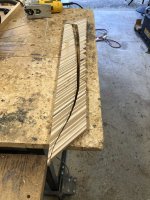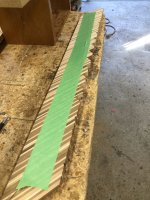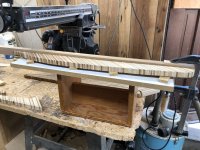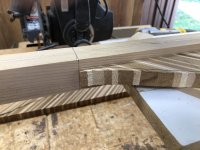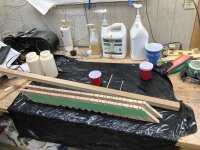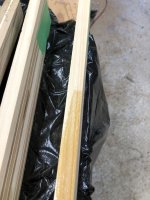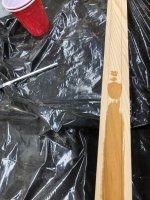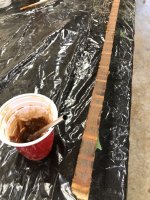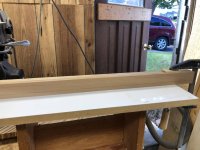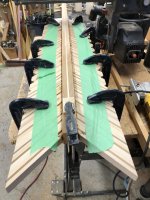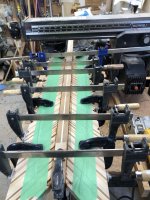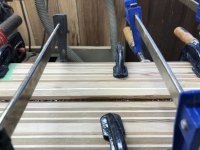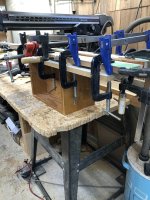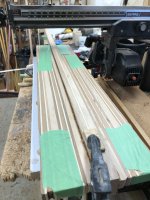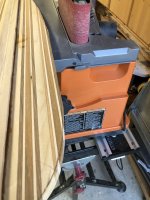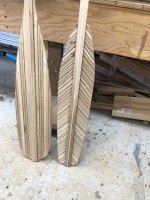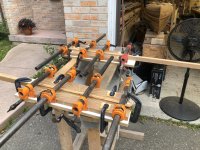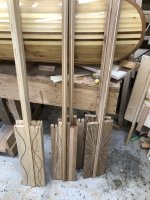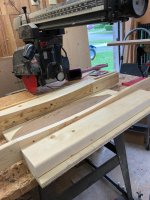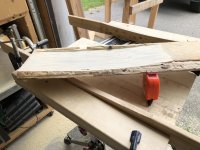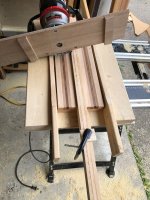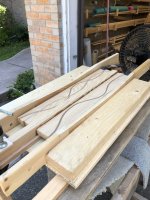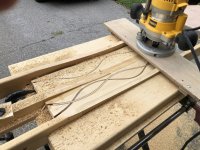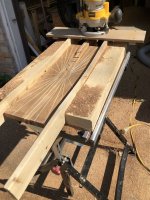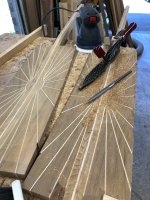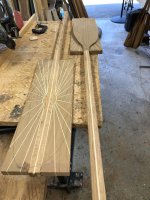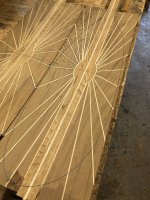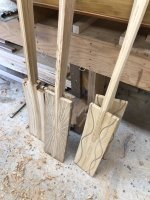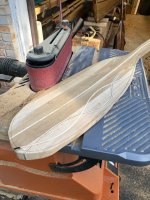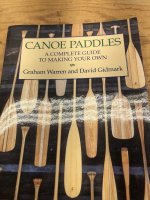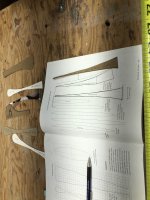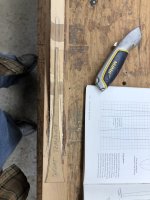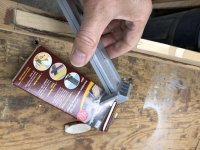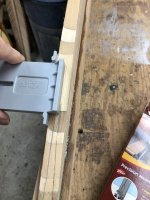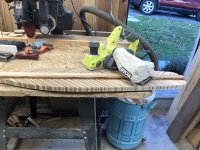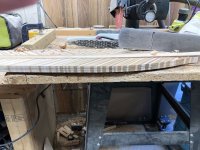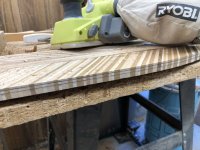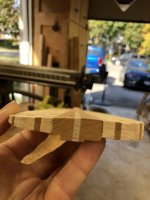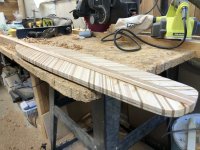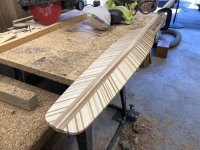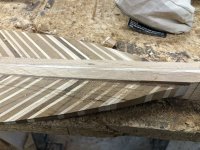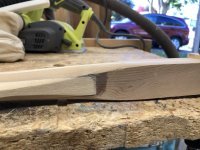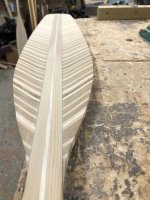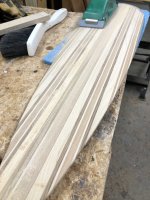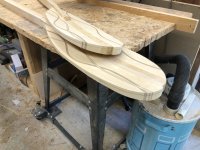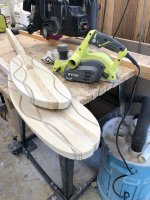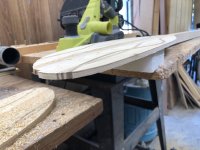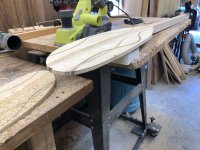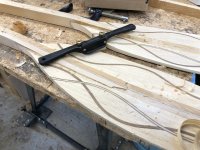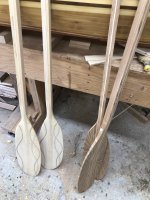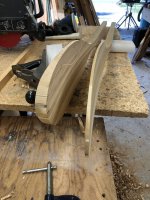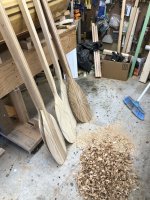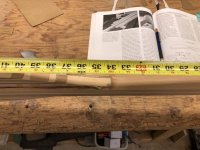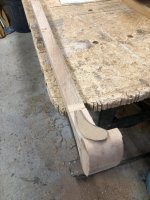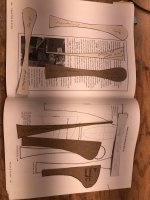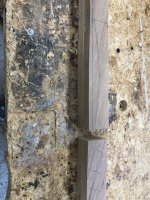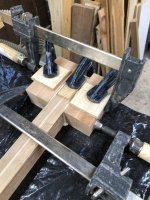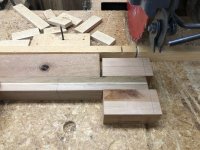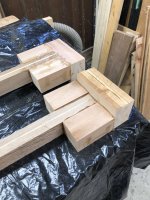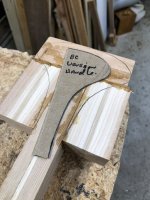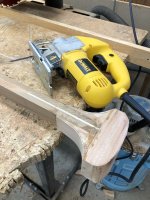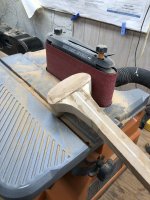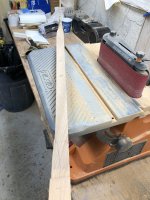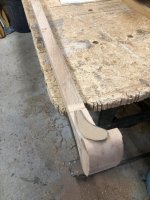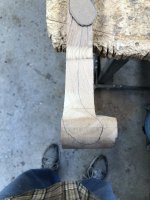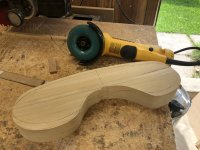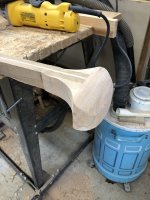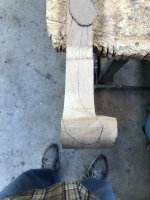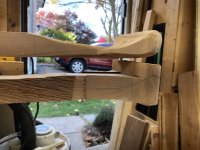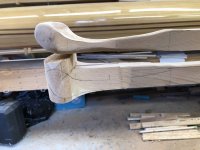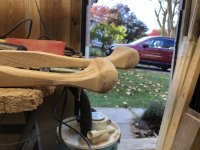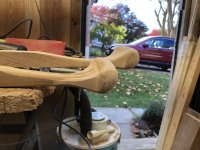Once you decide to make a paddle, one of the first decisions is the "how" part of that decision. The primary paddle building techniques would be solid and composite, for the latter you get a suitable sized chunk of wood and proceed to remove all the wood that isn't paddle. While I admit, there is an attraction to that style for me, this post series is not going to be about that.
That leaves us with composite, which is making a paddle from several pieces of wood ... I guess technically, you could do a glue up similar to a solid paddle and proceed from there, but for this thread, we will stick with the idea of using the composite building technique to produce lightweight, strong and good looking paddles for everyday use.
Granted, as soon as I said "strong" and "light weight" and "good looking" in the same sentence, I realized that could mean a lot of things, depending on who was reading. First then "strong" doesn't mean attacking bear strong or leveraging stones ... just a paddle that will handle your strokes in any kind of weather and will stand up to rock and shore push offs. "Light weight" will mean sub 2 pounds for a single and not too much more for twins and "Good looking" will be left alone, as beauty (or lack there of) is in the eyes of the beholder.
While I was thinking about how to order the thread and organize pictures, I realized that with the composite build method, twin and single blade have pretty much the same structure .... blade, shaft and handle. (The assumption here, is that the twin will have some sort of ferrule to allow it to be broken down, simply because and 8'+ paddle is unwieldy, so the ferrule can be considered as an end piece/handle).
This will simplify the whole build presentation in that the posts for each step can cover both twin and single paddle versions.
First post will cover making shafts
Shafts for the paddles will all be made to the same height and width 1.5" (high) x 1.125" (wide), construction is a sandwich 1/2" of softwood (NWC/WRC) and a 1/8" ash spine. Since I am doing shafts for a "batch" of paddles, it makes sense to try and make a common size and trim it down for each paddle type, later in the process.
Material Lengths for the Twins
Twin length Final = 260 cm ( 103")
Ferrule Length = 14"
Shaft into Ferrule = 3"
The ferrule adds 8" to the paddle length (14" - 3" - 3"), therefore .... Final Length - 8" = 91" for 2 shafts or 45.5" per shaft minimum, make them ~50" to be safe. You can plan to just make a longer shaft ... say 96" and just cut it in half, this will work, but the glue up is a bit more work. The important point here is to leave yourself some margin for trimming.
Material lengths for Singles
Beavertail Blade Length = 29" , Shoulder (top of blade) to Handle Tip = 33" .... Shaft Length = 62" min.
Ottertail Blade length = 28" , Shoulder to Handle Tip = 34" .... Shaft Length = 62" min.
I like to use a Skilsaw for cutting strips, so to start with, here is a pic of the saw setup, a small piece of aluminum angle iron clamped to my skilsaw ... setup with a 1/8" gap, also note the slight bend on the part that runs on the wood, this prevents that edge digging in
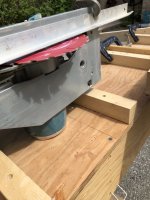
Strongback setup for sawing strips, setup with the ash plank ... doing the spines
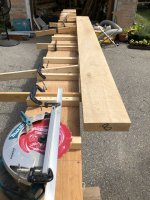
pic of the end supports and the plank stop, this keeps the planks from moving with the saw
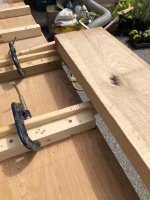
Finished as strips, sawdust all over the drive and a few extra cut, I think it may actually be a rule that you never cut exactly what you need
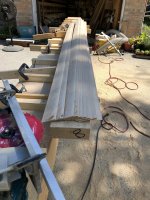
The half inch material is cut exactly the same way, mark the plank face with a couple of horizontal pencil lines, before cutting. This allows reordering the strips back to the same plank configuration for colour matching and grain reversing for glueups
Assembling the strips and clamping with out a jig will almost certainly result in a warped shaft, so a jig to hold the shaft "flat" in 2 dimensions is pretty much essential.
This one is just a piece of birch ply with a 3/4" x 1.5" piece of strapping glued/screwed to the face. The plywood edge facing out is a factory edge, I set my saw to just take a small cut off the face of the strapping (just to the base ply) and ran it along this edge. The resulting face is parallel to the factory edge and therefore "flat. The jig gets screwed down to a flat surface (strongback or work bench). This gives a flat jig in 2 dimensions. It's a bit of work, but can used for glue ups any time you need a flat jig, so pretty often.
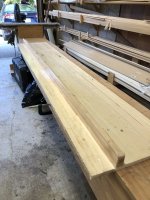
Epoxy was used for the shaft assembly, that is a personal preference based on a) longer work time b) void filling c) can be tinted. Whenever you join light and dark woods, using a darker tinted epoxy will give a very fine dark line down the joint, this tends to create a "distinct" separation between the colours of the wood (more on that later in the thread) that helps to make them "pop".
First step is to layout the strips to be used and clamps, shims, work space ... scrambling to get stuff at the clamping stage is something I don't like, so tend to have stuff prestaged.
I like to look at the pencil marks I made when I cut the strips and flip one strip ... this helps avoid the tendency of like strips to warp when joined in the same direction.
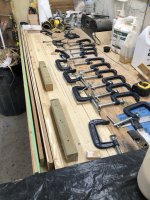
Surfaces to be joined are wetout with unthickened epoxy, I use 1" JEN brand foam brush to get the epoxy on. The epoxy batch is made big enough to do the wetout and have enough leftover to thicken for final coverage.
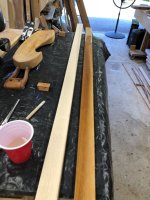
Thicken the remaining epoxy and swap to the smaller glue bristle brush to spread the thickened epoxy on surfaces to be joined (the epoxy is darkened with wood flour, in this case cherry and cabosil/fumed silica). For those who aren't familiar with "thickened" epoxy, it is thickened using an agent such as fumed silica (mine is called cabosil) and also wood flour (aka fine sawdust), mixed to a peanut butter like consistency. This done because unthickened epoxy is quite thin and will "run" out of the joint when clamped, thickening helps keep it in place. So the initail coat of unthickened will saturate the wood surface, the thickened application will bond to this coat and remain in the joint while clamping.
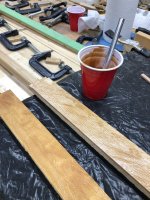
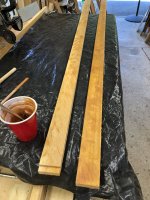
The shaft is placed on the clamping jig, a sacrificial board added to the outer side and clamps applied, along the length, very light at this point. Add the top shim pieces, to hold the strips down with light pressure and clamp lightly till the strips are all held down. Then go back and add half turn down the length wise clamps, you will see squeeze out starting.
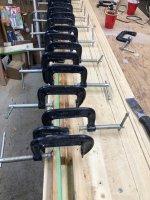
Keeping turning the length wise clamps to apply the pressure evenly, this is not a glue joint, epoxy needs to be left in the joint ... so think turn until the clamp snugs, then add 1/4 turn, repeat down the line till they are all snug. Leave any unused epoxy in the cup sitting there to cure.
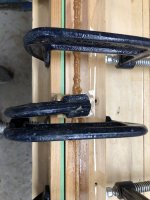
At this point I usually wipe off the squeezed out epoxy as well as I can, working around the various clamps ... just because wet epoxy is a lot easier to clean off than hard epoxy. Plan the clamping for the end of the day and walk away for the night.
In the morning, check that epoxy mixing cup to see if it is hard and cured ... consider this a quality check. If the epoxy isn't hard and cured, then your shaft isn't either ... and this is why we make extra pieces. I never assume that every batch of epoxy I make is good, saving those cups has saved me a couple of times. Assuming the epoxy setup well, take off all the clamps and before releasing the new shaft, clean off any epoxy "lumps" with a carbide scraper or chisel, then hit the whole length with 60 grit loaded into a flat sanding board, sand until the epoxy side is mostly flat.
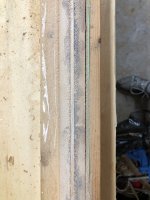
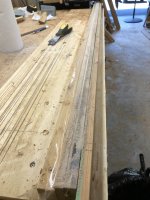
Use that "mostly flat" side to run along your saw guide ( I have a radial, substitute whatever you use) to remove ~1/16" from the other face and get a nice clean edge
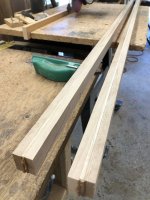
Flip over the shaft and trim the single blade shafts to 1 3/8" and the twin blade shafts to 1 1/4", leaving you with the sized shafts for each project.
A few words on the shaft sizes, the singles are 1 1/8" x 1 3/8", giving a distinct rectangle which will round out to an oval shaft, giving a nice index on the shaft handle.
The twins however will need to fit into 1 1/8" round hole so oval isn't a good idea. Well, a large oval isn't, but adding that extra 1/8" to make the shafts 1 1/4" x 1 1/8" can be handled at the 3" portion of the shaft end that fits into the ferrule, by taking off ~1/16" on each face so that it is round at that point and fits the ferrule snugly. The small lip this creates is not noticeable, but the slight oval of the shaft does create a little indexing and what I think is a better hand feel.
The ash spine allows you to go a little thinner than a softwood only shaft and still be rigid and strong ... you can vary the shaft sizing to suit your preferences. I made a softwood only shaft on my previous twin build at 1 1/4" and just trimmed down the last bit to fit the ferrule. This produced a shaft with a little bit of a "spring" as you paddled, the ash spine is a lot more rigid and weighs a bit more, so slimming the shaft to 1 1/8" x 1 1/4" compensates for the added weight.
You can vary your shaft composition using as many layers as you like, I like to mind the weight and the hardwood here provides some colour contrast and strength, i took the overall size down a bit to compensate for the added weight, but there are limits to reducing shaft size as it needs to give a good hand feel as well, I suspect even a 1/16" ash piece would have been sufficient to add the strength and stiffness I was after ...
The shafts get set aside for now and we move on to making blades.
Brian
